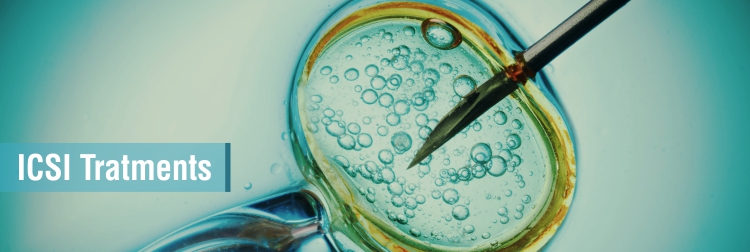
Until the 90's males with very low counts (less than 5 million per ml) or poor quality sperms had no hope of fathering children. This problem was surmounted by the new breakthrough of ICSI, which took place in Brussels, Belgium in 1992.
Since then, many such patients have fathered a child. We started our own ICSI programme in 1995–96 and have performed till date more than 800 cycles with success rate of 30 to 40%, which is comparable to the best units in the world.
Concept of ICSI:
- ICSI differs in the fertilization process. Unlike in IVF, where one egg is mixed with 1 lakh sperms, with fertilization taking place on its own, ICSI is a technique where each egg is held and injected with a single live sperm. This micro–fertilization is done with the help of a machine called the Micromanipulator. The procedure (anchor) can be categorised into 11 steps.
- Procedure:
Controlled Ovarian stimulation with drugs (GnRH Analogues and Gonadotrophins) to produce many eggs. - Monitoring of follicles and egg development with the aid of vaginal sonography and serial estradiol hormone estimation.
- Administration of hCG injection, (Human Chorionic Gonadotrophins) when the two leading follicles are 18mm. in diameter.
- Oocyte or egg retrieval under short general anaesthesia, 35 to 37 hours after HCG injection.
- Identification and isolation of eggs in the laboratory.
- Sperm collection and processing in the lab. Incase of azoospermia (no sperms in the semen) the sperms are collected directly from the testis with the procedures of PESA/MESA/FTNB/TESE or TESA.
- Dissection of the eggs in the laboratory with the help of an enzyme called Hyloronetis Placement of eggs into small droplets of culture media under oil.
- Placement of sperms into small droplets of PVP under oil. Immobilisation of the sperm with a micro–injection needle (Diameter of 7 microns) and aspiration of the immobile sperm into the needle (tail first).
- Holding the egg with a holding pipette and injection of the immobilized sperm into the held egg Placement of these eggs into the incubator for 2 to 5 days.
- Embryo formation 2 to 5 days after fertilization.
- Embryo transfer of good quality embryos back to the womb, after 2(four cell embryo), 3 (six–eight cell embryo)or 5(blastocyst stage) days after egg removal.
ICSI is often recommended if:
- The male partner has a very low sperm count.
- Sperm antibodies have been detected at significant levels, which prevent sperm binding to the egg.
- Poor Motility.
- Low fertilisation rate (below 20%).
- TESA/PESA.
- The male partner has had problems obtaining an erection and ejaculating, which may include men with spinal cord injuries and men with diabetes.
Nowadays, some units are advocating routine ICSI for all patients, including those with normal sperm counts. We do not believe in such practice as we feel that pregnancy should be achieved with minimum handling of the gametes outside the body. If the sperm count is good enough for fertilization with IVF, we will not do ICSI. However, if a particular patient has a sperm count which is in the grey-zone area, then we may subject half the eggs to IVF and half the eggs to ICSI.
Our success rates are in the region of 30 to 40% in both azoospermia and non-azoospermia patients, which are comparable to the best in the world. At Bloom IVF Mumbai, ICSI is performed for on patients mostly as we believe ICSI shows higher fertilization rates than standard IVF (this is a personal experience not supported by international literature).